As Gotham City surrenders to Scarecrow’s “fear state,” the terrifying grip of Dr. Crane is more potent than ever before. With his signature fear gas, Scarecrow has always prided himself in his ability to bring out the worst in people, showing them their greatest fears as they surrender to its effects. Under Scarecrow’s fear gas, arachnophobes see spiders. Ophidiophobes see snakes. Trypophobes see tiny little holes, all grouped together. (Don’t look it up.) But what do the greatest icons of the DC Universe see, when confronted by Crane’s concoction? Over the years, a myriad of storylines have provided us with answers. So, with Halloween coming up, it’s time to discover what scares our heroes most.
Batman

By virtue of being a Batman villain, Batman himself is the person who has most frequently suffered Scarecrow’s personal attacks. And while Batman is always developing antidotes and counter-agents to Crane’s fearful chemistry, Scarecrow always has a new formula ready to dispense against the Caped Crusader (see…well, pretty much every issue of Batman for the past four months).
Over the years, Scarecrow’s gas has caused Batman to see many things, from his greatest failures to his fear of abandonment. But it doesn’t take a scholar to guess what haunts Batman the most: nine times out of ten, it always comes back to that night in Crime Alley. In fact, the first on-screen depiction of the deaths of Thomas and Martha Wayne is owed to the Scarecrow, who triggered that memory in the season nine Super Friends episode, “The Fear.” With that very fear ever-present as the driver of Batman’s mission, it’s no wonder how easily Scarecrow can evoke it. Luckily for us, Batman’s been working through that pain every night of his life.
Superman
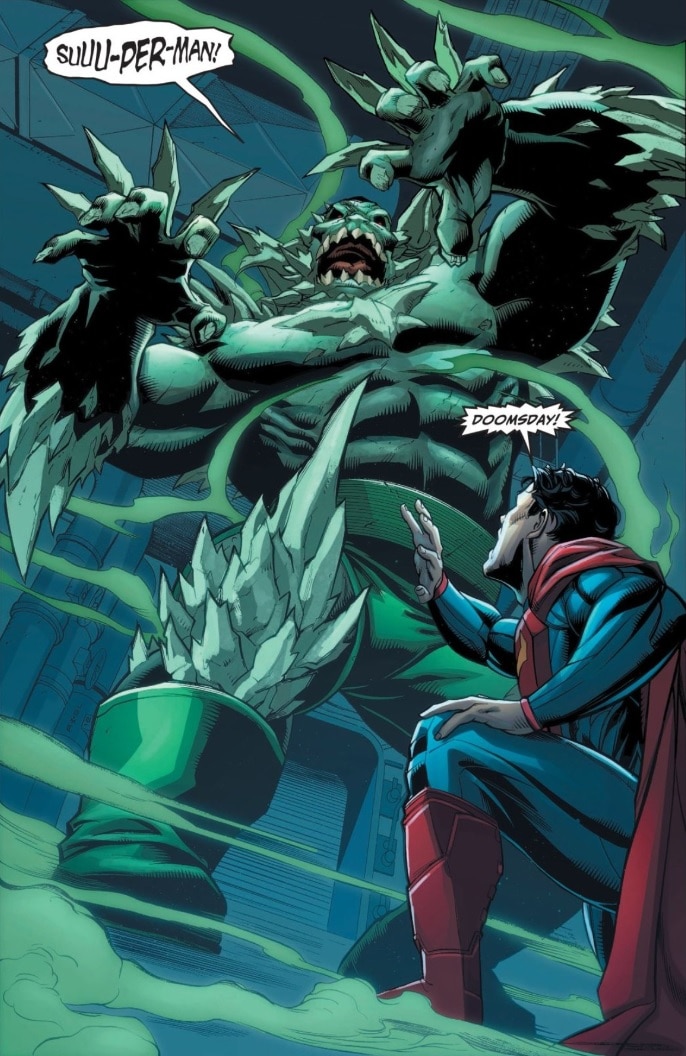
In Superman/Batman #65, a fear gas attack causes Superman to see all of his loved ones perish in a plane crash that he was too late to save…but that isn’t the fear gas incident Superman is best known for. While Scarecrow himself doesn’t play too large a role in the Injustice saga told through games, comics, and now an animated film, his fear toxin plays a major role in the impetus behind the entire story. By lacing Scarecrow’s concoction with Kryptonite, the Joker causes Superman to see Lois Lane as his most powerful enemy, Doomsday—the creature who took him away from his family. In a turn of tragic irony, it was Superman’s fear-triggered attempt to save his family which took them away, and led him down the dark path to tyranny.
Wonder Woman
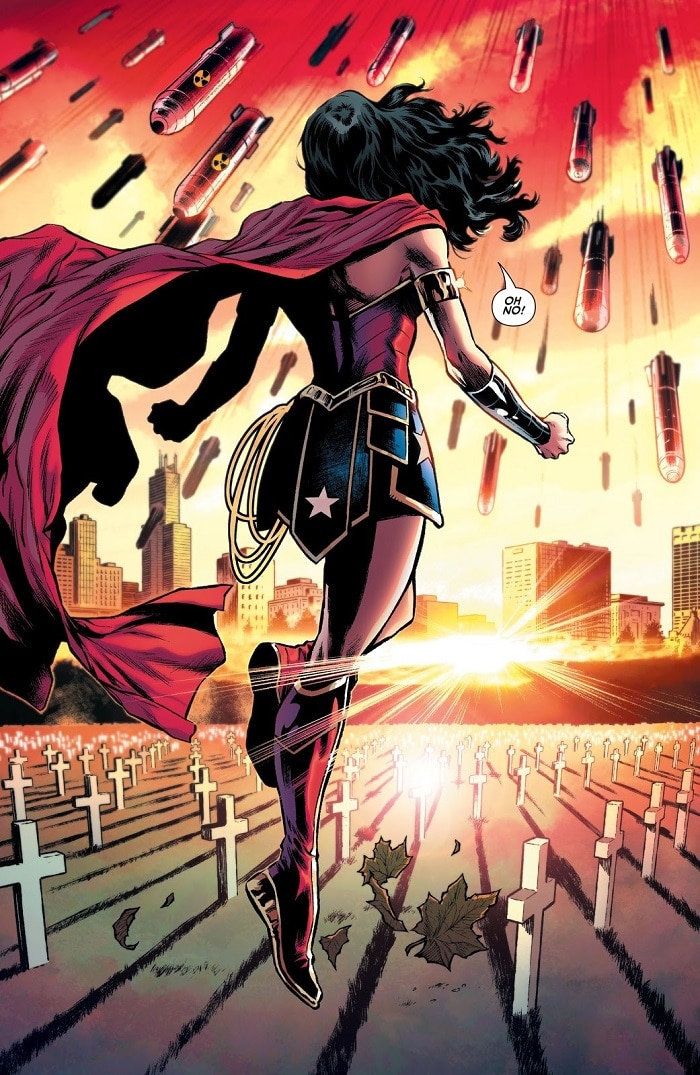
As Princess of Themyscira and champion of the Amazons, it’s hard to believe that Wonder Woman could be afraid of anything. But as we discover during a Scarecrow attack in Wonder Woman: Agent of Peace #4, there is one terror that keeps Diana up at night: the fear that despite her mission to be an ambassador of peace to the world, mankind would surrender to its ugliest impulses and destroy itself in a global conflagration of nuclear war.
Clouded by fear gas, Diana’s vision presents too many atomic bombs for any one woman to stop, and sees her mother in the aftermath placing the blame on her for her failure. But Wonder Woman wins out in the end, with a belief in mankind’s capacity for compassion stronger than the worst fears Scarecrow can conjure within her—and the resolve that no matter how bleak the world becomes, Wonder Woman will never stop fighting for love.
Hal Jordan
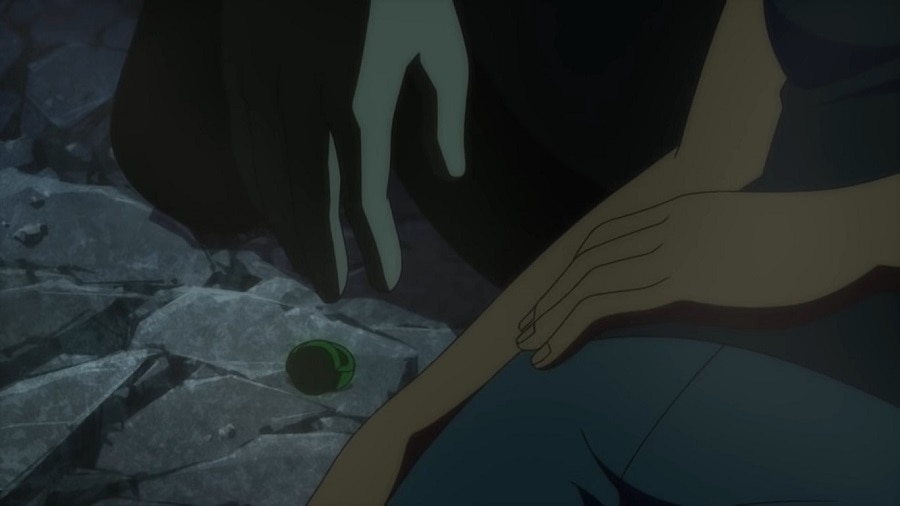
For many years, Hal Jordan of the Green Lantern Corps was known as “The Man Without Fear.” But as both Batman and the Scarecrow know all too well, no such man truly exists. In the animated film Justice League: Doom, Vandal Savage accesses Batman’s contingency plans to neutralize each of the world’s greatest heroes—including how to strike fear into the heart of the supposedly fearless Hal Jordan.
With the aid of Star Sapphire and Scarecrow’s fear gas, the Green Lantern finds himself in a scenario where he apparently fails to save the life of a woman very much like Carol Ferris, proving himself unworthy of the ring…and causing him to doubt that any being is truly worthy of the power it grants, let alone himself. Deep in a Scarecrow toxin-soaked mine shaft, Hal Jordan truly discovers that the one thing a Green Lantern fears is also the element which renders them powerless: fear itself.
Batgirl
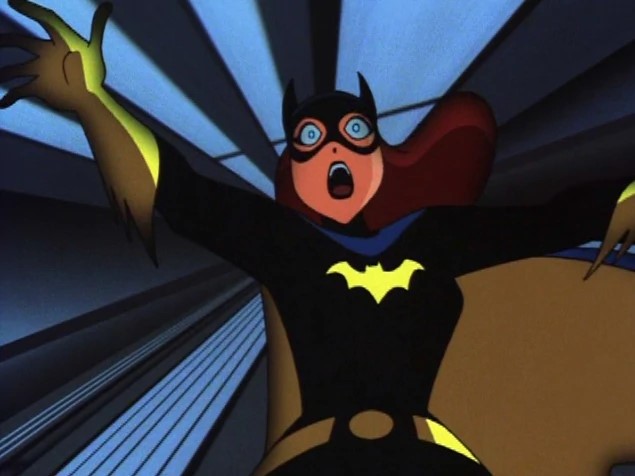
With the vivid power to bring a hero’s greatest fears to life, it’s always tempting to bring Scarecrow into any adaptation of Gotham City. Such is the case for perhaps the most memorable episode of The New Batman Adventures, “Over the Edge”—a fear gas induced journey into the mind of Barbara Gordon.
Batgirl’s untimely demise is only the catalyst for the real nightmare—the dissolution it would cause of the relationships between the people who matter the most to Babs, breaking the hearts of her father Jim Gordon and her mentor Batman alike as they go to war with each other. Chastened by this horrible vision, the prospect of her greatest fear prepares Barbara to confront it once and for all, as she goes to confess her vigilante life to the Commissioner. Because while Barbara Gordon has built her empire of information on keeping secrets, it’s the ones she keeps from the people she loves which are her greatest fears.
The Robins
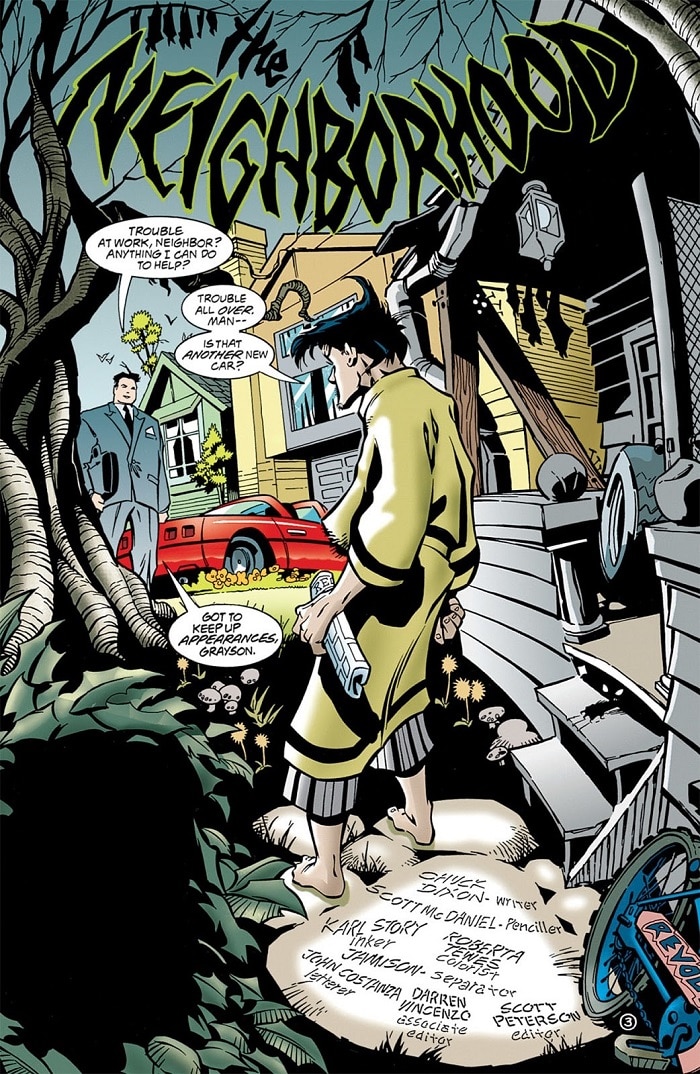
When you’re Batman’s sidekick, the occasional Scarecrow encounter is an occupational hazard that comes with the territory. Almost every one of Batman’s charges gets a face full of fear gas from time to time (with the notable exceptions of Cassandra Cain and Damian Wayne—as of this writing, at any rate).
In 1997’s Nightwing #10, Dick Grayson is subjected to the worst fate he can imagine: a normal suburban life, in a loveless marriage, with a 9-to-5 work-a-day job. While he was Robin, Jason Todd saw a number of things in the fear gas, from a Pre-Crisis fear of heights to a Post-Crisis fear of failure to live up to the Robin legacy. These days, he mostly sees clowns. In Detective Comics #820, Tim Drake saw an alternate version of himself succeeding where he failed to measure up, followed by a vision of Superboy-Prime. (Tim was still mourning at the time over the loss of Conner Kent). As for Stephanie Brown, a fear gas inhalation in her own Batgirl #9 presented her with Tim Drake as well, this one chastising her for a failure to measure up as a hero in her own right. Turns out accruing a few cases full of personal baggage is another occupational hazard for being Robin. Or, as we call it, Robinhood.
The Joker
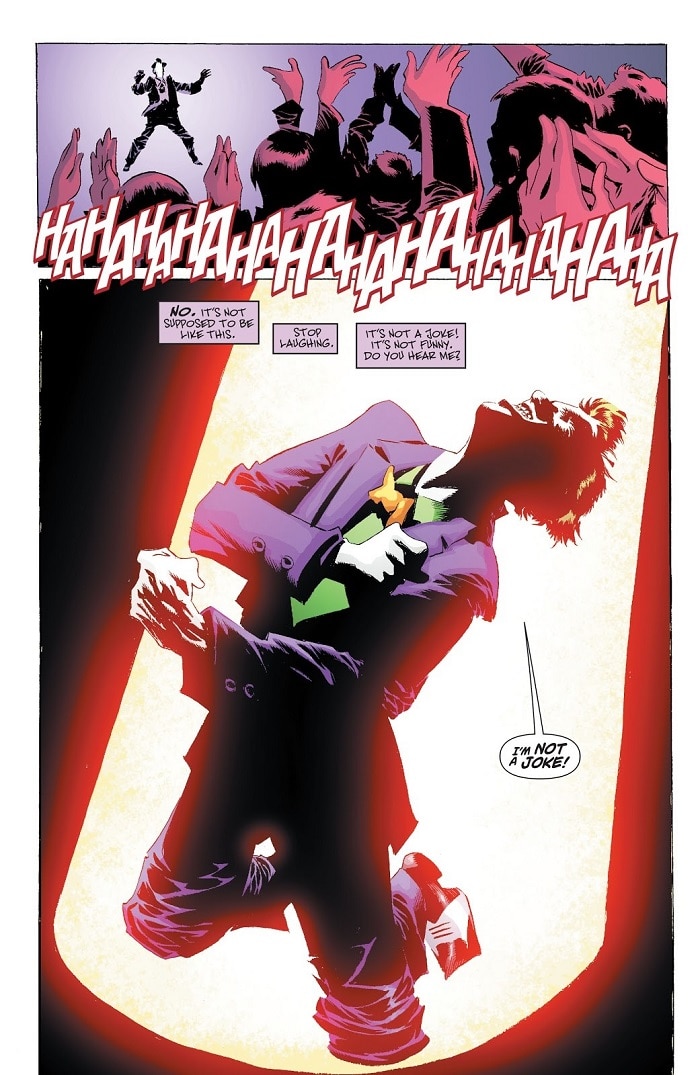
What scares the Clown Prince of Crime? It’s a tough question, considering most citizens of Gotham are more terrified of the Joker than they are of Scarecrow himself. If you ask Joker, it’s a moot point—as he famously states in Detective Comics #664, a side effect of Joker’s tumble into the Ace Chemicals vat is an immunity to all toxins, up to and including fear gas.
But if you’re ready to take the Joker at his word, then I’ve got the Robert Kane Bridge to sell you. In 2009’s Superman/Batman #65, the Joker’s greatest fear is losing control of the joke—being perceived by his audience not as the master, but as its subject. The Joker claims it’s all in fun, but being laughed at is the worst fate he can imagine. Like Batman himself, Joker wears the symbol of his greatest fear on his face. And may the Dark Knight help us all if the word gets out, because while he loves to dish it out, the Joker won’t suffer being anyone else’s fool.
Harley Quinn
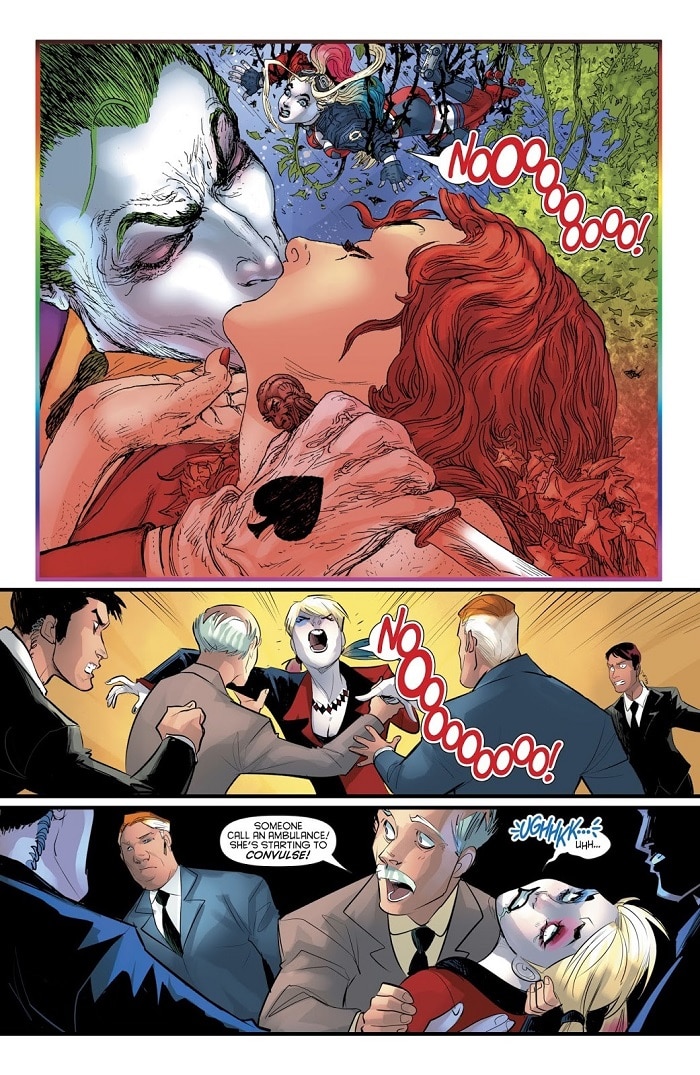
One person the Joker certainly isn’t a joke to is Harleen Quinzel, the person whose life he may have changed the most dramatically (give or take a Robin). So, after years of hard work on herself to escape from his shadow, the one thing that always comes rushing back the moment Harley gets a whiff of the bad stuff is the Clown Prince himself, back in her life.
2017’s Harley Quinn #29 presents us with a particularly gruesome fear trip through Harley’s head, with the Joker delivering death to her precious pets and stealing Poison Ivy, the cornerstone of her sanity, away from her. Luckily, it’s Poison Ivy herself who ends up breaking the spell with true love’s kiss—or some anti-toxin lipstick.
Swamp Thing
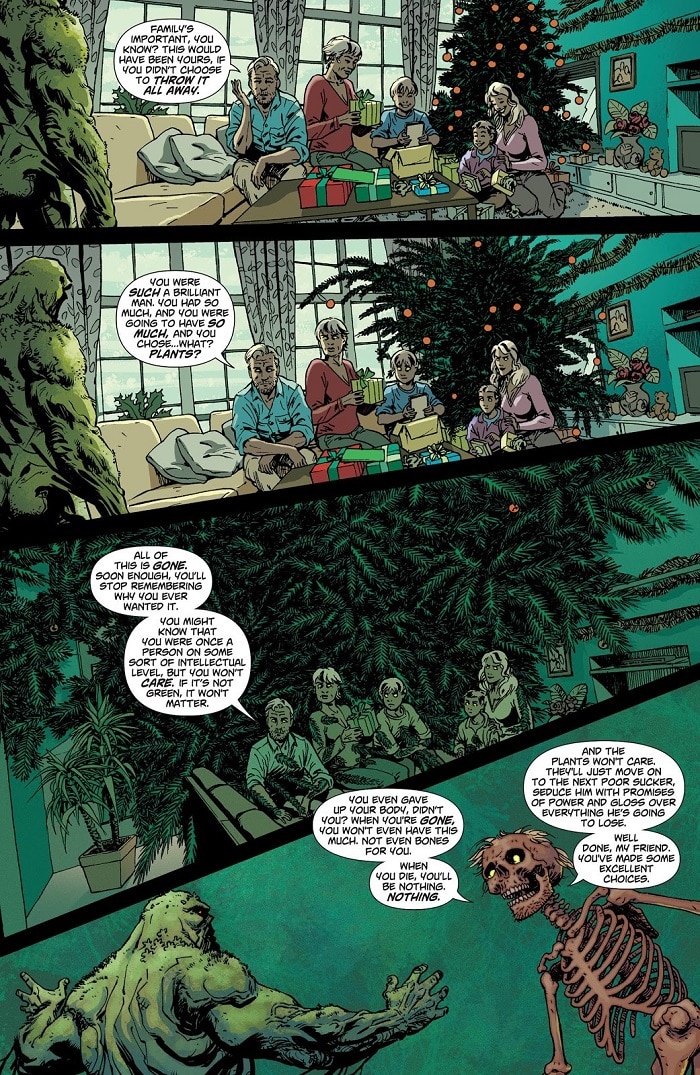
Thought that a plant-based organism would be immune to Scarecrow’s toxin? Think again. The world of Swamp Thing has always been closer to the horror genre than superheroics, after all. Terror has been a core tenet of Swamp Thing since the 1970s. So when Swamp Thing comes to Gotham City in 2013’s Swamp Thing #19-20, the Scarecrow, armed with a special variant of carbon dioxide-based fear gas for just such an occasion, is a natural match for Big Green.
What Swamp Thing sees is an illustration of the fear which has gripped him ever since his transformation: the ever-encroaching loss of his own humanity as he becomes one with the Green. It’s, in a sad way, an inversion of Nightwing’s greatest fear—that he’ll forever be denied the normality he left behind in the swamp. It’s a fear compounded by the fact that, at this point in Swamp Thing’s history, Alec Holland chose to give up his humanity for a greater cause. No one ever said being a hero was easy…or that you’d never come to regret even your noblest choices.
Scarecrow

So, where does that leave Scarecrow himself? What does the master of fear have nightmares about? What fear inside of Jonathan Crane drove him to a life obsessed with terror? According to his own origin story, it all goes back to a cycle of physical and emotional abuse from his own childhood. In Batman: The Dark Knight #15, a taste of his own medicine conjures the room that his own father would keep him locked up in as a boy.
But typically speaking, most Batman fans know what really frightens the Scarecrow. In fact, it’s a pursuit of that fear which keeps him going night after night, fascinated by the one thing that can get a reaction from his calloused adrenaline system: the only other man in Gotham who has so thoroughly devoted himself to the effects of terror and how they can be used to shape the city’s future. Superstitious, cowardly lot that they are, there is no greater symbol of fear to all the evil of Gotham City than the Batman.
"Fear State" continues into November in the pages of Batman, Detective Comics, Nightwing, Catwoman, I Am Batman and Harley Quinn.
Alex Jaffe is the author of our monthly "Ask the Question" column and writes about TV, movies, comics and superhero history for DCComics.com. Follow him on Twitter at @AlexJaffe and find him in the DC Community as HubCityQuestion.




















